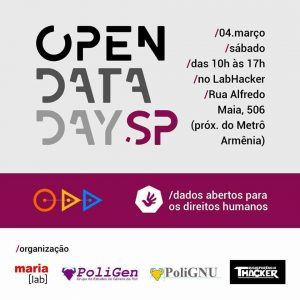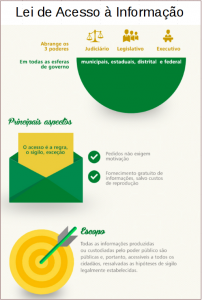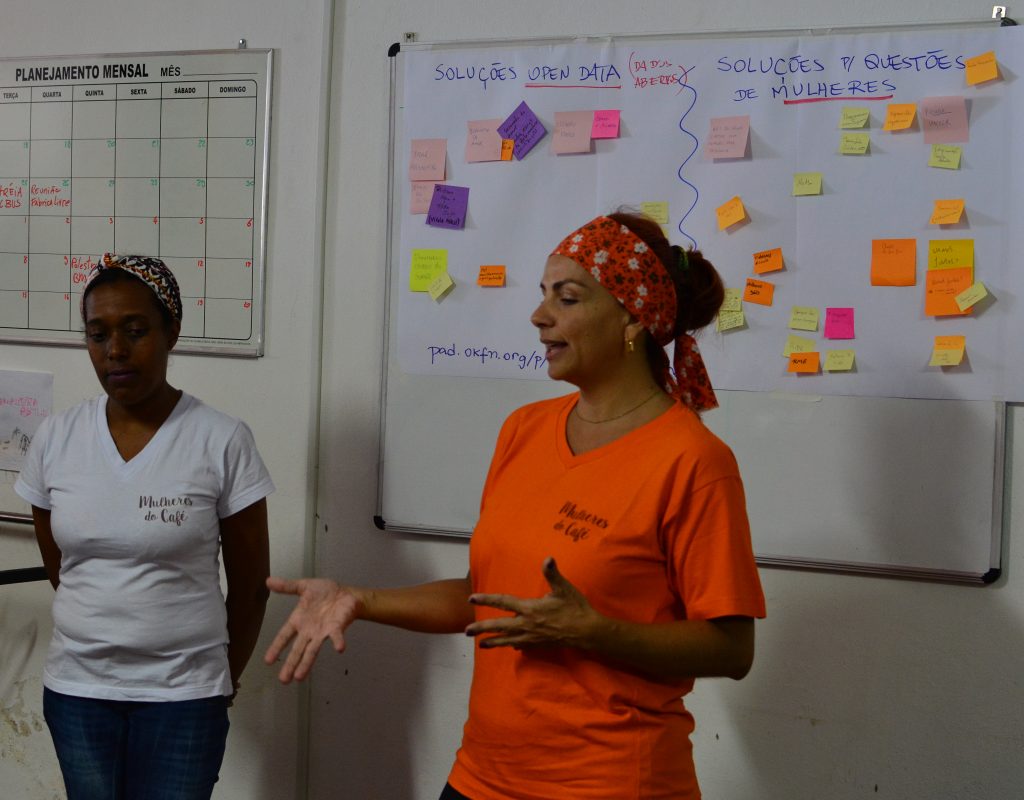This blog is part of the event report series on International Open Data Day 2017. On Saturday 4 March, groups from around the world organised over 300 events to celebrate, promote and spread the use of open data. 44 events received additional support through the Open Knowledge International mini-grants scheme, funded by SPARC, the Open Contracting Program of Hivos, Article 19, Hewlett Foundation and the UK Foreign & Commonwealth Office. This event was supported through the mini-grants scheme under the human rights theme.
This blog has been translated from this Portuguese original post.
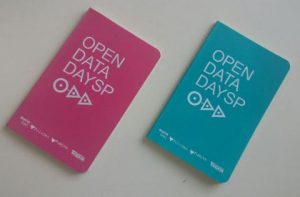
The International Open Data Day was celebrated for the seventh time on March 4th, 2017. It is always a good opportunity to present open data and show its benefits for newcomers. This year, as a joint initiative between PoliGNU, PoliGen, MariaLab e Transparência Hacker, on the Human Rights theme and we focused on the discussion about women participation in public policy development by looking at related open datasets.
Our open data day activity was designed with the following 4 steps:
- Initial presentations and explanations;
- Open data initiatives mapping;
- Women’s fights related initiatives mapping;
- Data analysis and visualization made by thematic groups;
1st Step – Initial presentations and explanations
We started with a brief introduction from each participant to allow everyone to know each other. This showed how diverse of a group we were: engineers, developers, business consultants, designers, social assistants, teachers, journalists, students and researchers.
Some of the participants had collaborated with the Brazilian Freedom of Information Act (FOIA – 12.527/2012), so we had a small discussion about how this law was produced, its purposes and limitations. There was also a brief presentation about what is open data, focusing on the eight principles: Complete, Primary, Timely, Accessible, Machine processable, Non-discriminatory, and License-free.
2nd Step – Open Data initiatives mapping
We started with a brainstorm in which everybody wrote open data related solutions onto post-its notes. The solutions were grouped into four macro themes: Macro Politics, Local Politics, Services and Media.
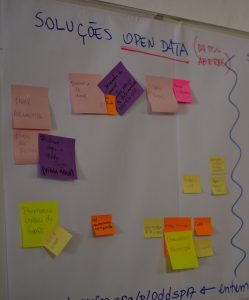 .
.
3rd Step – Women’s fights related initiatives mapping
After we had a second brainstorm about initiatives connected to women’s fights, claims and demands were mapped and added onto post-its. Those initiatives could be not internet-related, as long as they would be related to open data. The post-its were grouped into 5 themes: “Empowerment through Entrepreneurship”, “Empowerment through Technology”, “Visualisations”, “Campaigns” and “Apps”.
4th Step – The teams’ work on Data Analysis and DataViz
Two groups of complementary interests were formed: one that focused on the underrepresentation of women in elected public positions, and another, which sought to address gender inequality from an economic bias perspective.
The team that focused on political perspective, sought open data from the Electoral High Court referred to the Brazilian 2016 elections (available here). The group spent considerable time downloading and data wrangling the database. But even so, they got interesting statistics such as the average expenditure per candidate: ~ R$16,000 for male candidates and ~ R$6,000 for female candidates. Although all parties and states have reached the share of 30% of women, as defined by the law, women’s campaigns receive much less investment. For example, all women’s campaigns, together, did not reach 7% of the total amount of money in Rio de Janeiro City Hall Elections.
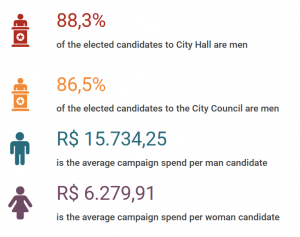
Tables, graphs and maps were generated in Infogr.am and the code produced is available in PoliGNU’s GitHub. With this disparity in women representativeness, it is undeniable that the decision-making power is concentrated in the hands of rich white men’s hands. How is it possible to ensure the human rights of such diverse society if the decisions are taken by a such a homogeneous group of rich white men, majority of whom happens to be old? This and other questions have remained and are waiting another hackday to delve again into the data.
The team that focused on economic perspective sought open data from the IBGE website of income, employed population, unemployed population, workforce, individuals microentrepreneur profile, among others. Much of the open data available was structured in a highly aggregated form, preventing manipulation from generating or doing any kind of analysis. As a consequence, this team had to redefine their question a few times.
Some pieces of information deserve to be highlighted:
- women’s workforce increasing rate (~ 40%) is higher than that of the men (~ 20%)
- the main segments of women’s small business are: (i) hairdressers, (ii) clothing and accessories sales, and (iii) beauty treatment activities;
- the main segments of men’s small business are: (i) masonry works, (ii) clothing and accessories sales, and (iii) electrical maintenance.
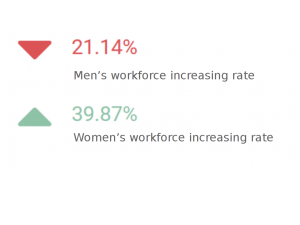
These facts show an existing sexual division of labour segments – if this happened only due to vacation, it would not be a problem. However, this sexual division of work reveals that some areas impose barriers and prevent women’s entrance, although, these areas often provide better pay than those with a female majority.
Graphs were generated in Infogr.am and the data used for the graphs is available here.

